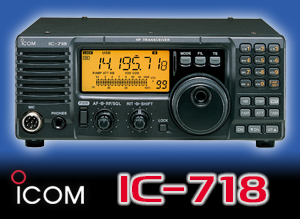Propagation News – 27 April 2025
We had yet another week of unsettled geomagnetic conditions. The Kp index peaked at 5.33 on the 21 April as the solar wind speed hit just above 600 kilometres per second, and active geomagnetic conditions were observed.
This was caused by a massive coronal hole on the Sun’s surface, which measures nearly 700,000km in length. At the time of writing, part of it is still Earth-facing, but the Bz or interplanetary magnetic field is facing North, so its negative effects are not being felt.
The Kp index was down to 3.67 on the morning of Thursday 24 April, but it wouldn’t take much for the Bz to swing southwards and for the Kp index to rise again.
Meanwhile, the solar flux index has risen from a recent low of 148 up to 168. This has meant MUFs over a 3,000km path have reached 25MHz at times, but have usually been slightly lower. If the Kp index can stay low there is a good chance of higher MUFs being attainable, but we have probably seen the best of 10m propagation until the autumn.
Much of the recent DX has been worked on slightly lower frequencies, such as VP2VI British Virgin Islands on 40 and 20m, C5R The Gambia on 20 and 12m, and HD8G Galapagos Islands on 20, 17, and 12m. There is still the chance of DX on 10m, but it may be fleeting.
Next week, NOAA predicts that the solar flux index will stay high, perhaps reaching 170 to 175. We may get a slight respite from unsettled geomagnetic conditions from the 26 to 30 April when the Kp index is forecast to be around two to three. However, unsettled geomagnetic conditions are forecast for the beginning of next month, with Kp indices of five or six on the 1 and 2 May.
VHF and up
Next week high pressure should dominate, meaning a chance of Tropo for much of the time that will probably favour paths to the east, to Scandinavia or northern Europe.
Rain scatter won’t have featured much other than over northwest Britain in recent days, and meteor scatter is reducing back to random activity which tends to be better in the early hours before dawn.
The solar conditions have continued to keep the Kp index up and there was a fine auroral opening last week on the 16 April, so for more aurora, it’s still worth checking for when Kp values nudge above five.
As the end of April moves into May we can start to give serious thought to the coming Sporadic-E season. Hesitant beginnings often show up on 10m and 6m and, as usual, the digital modes will be best for any weak events. CW and SSB are just possible in the stronger openings, especially on 10m.
The background rule is that there are usually two preferred activity periods, one in the morning and a second in late afternoon and early evening. However, at the start of the season, there can be a lot of spread in the timings.
EME path losses are at their lowest with perigee today, Sunday 27 April, and Moon declination is positive and rising. Moon windows will lengthen along with peak elevation, and 144MHz sky noise starts the week low but increases to moderate as the week progresses. From late Sunday to early Monday, the Sun and Moon are close.
Category: GB2RS Propagation News










